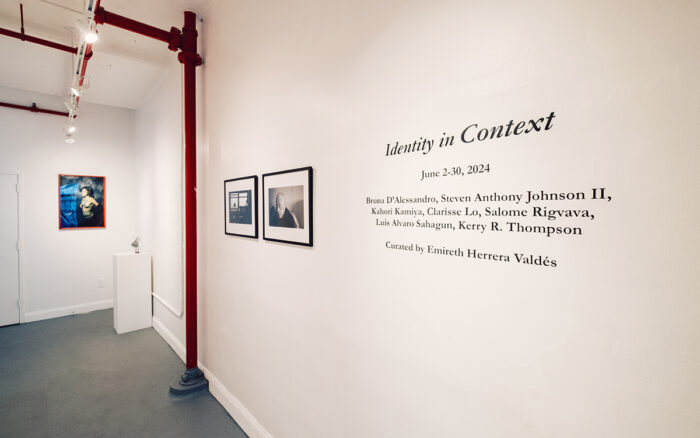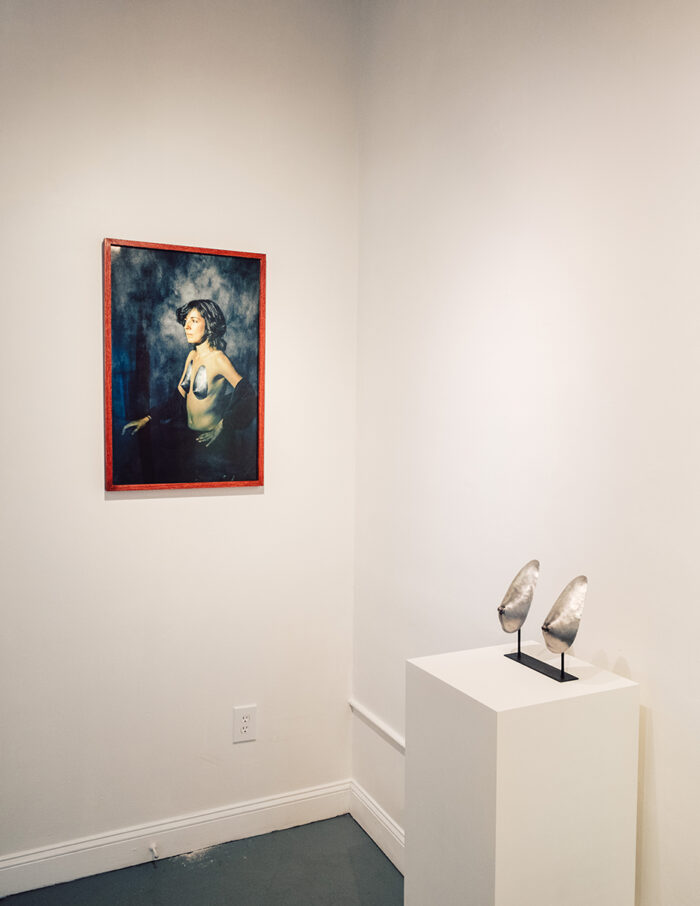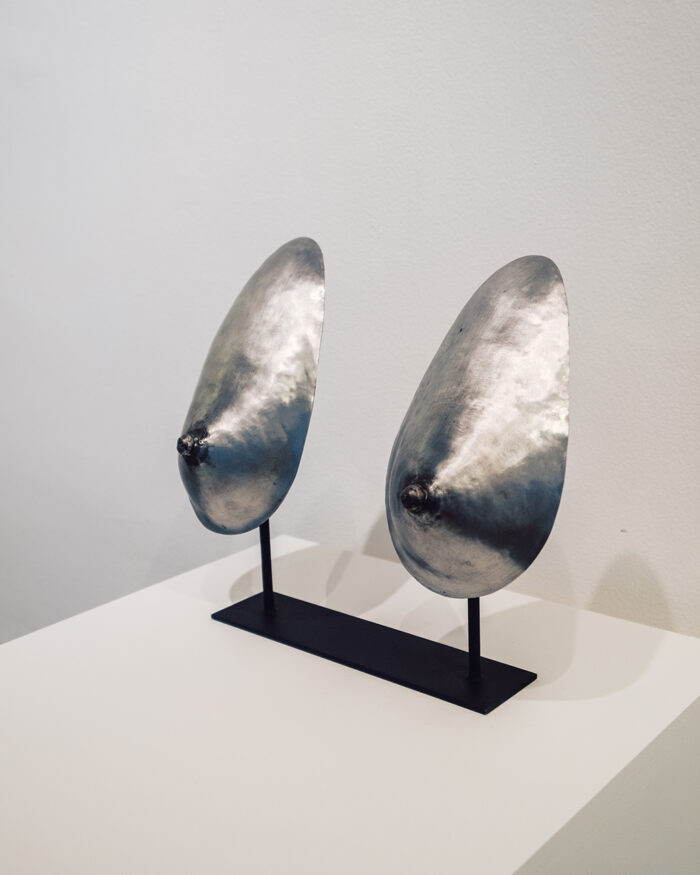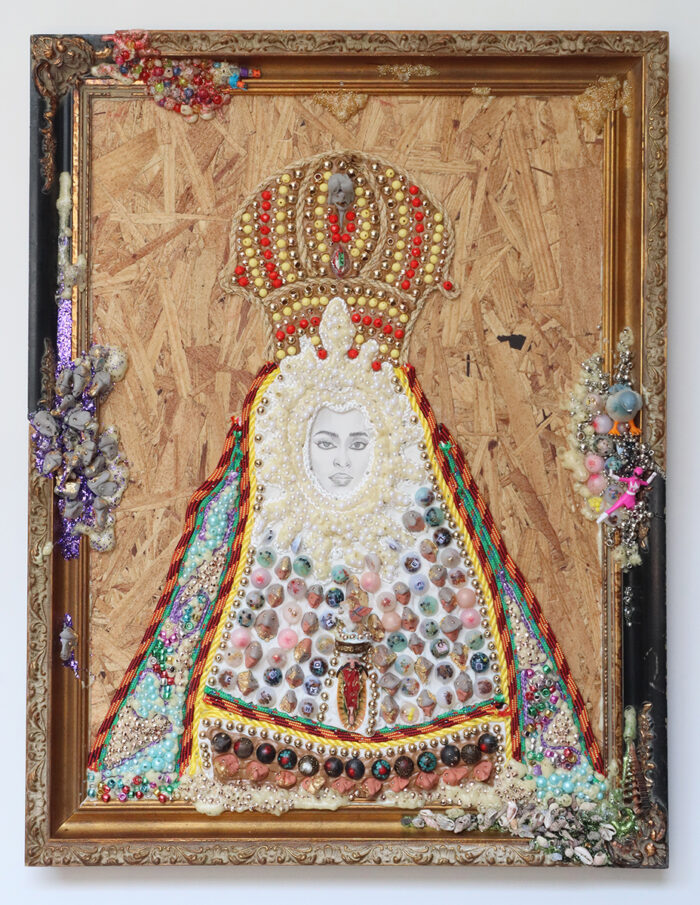Featuring the works of seven artists–sculptors, painters, photographers, and draughtspeople– the current show at Kunstraum in Brooklyn, entitled “Identity in Context,” celebrates individuality, personal experience, and cultural connection. Each artist delivers work that illuminates the artist’s role and that of the subject while reckoning with belonging and how to find a place for one’s unique perception within a broader societal or natural environment and context. This context is both deeply personal and unique. It is less an expression of society and the times and more of a reflection of the self, the artist, and their identity within contemporary culture. Curated by Emireth Herrera Valdés, Curator-in-Residence, the show brings together Bruna D’Alessandro, Steven Anthony Johnson II, Kahori Kamiya, Clarisse Lo, Salome Rigvava, Luis Alvaro Sahagun, and Kerry R. Thompson to highlight the role of the artist as a purveyor of personal truth.

In one corner of the gallery, a collaboration between artists Bruna D’Alessandro and Olga Antipina features D’Alessandro’s wearable hammer-formed steel breastplates in conversation. Both sculpture and apparel, Steel Breasts (2023) and Portrait with Steel Breasts (2024), show the confluence of functionality and artifice. Connecting battle armor and femininity, strength and protection, vulnerability and intimacy, the plates obscure and reveal what lies beneath them. Steel Breasts takes on a new meaning to the term breastplate.



Kahori Kamiya uses sculpture to explore themes of artistry and motherhood. In her vibrant sculpture Sanctuary (2023), part of her “Go-Shintai” or “Sacred Body of the Kami” series, Kamiya connects her experience as a mother nursing and rearing her children with the ancient folk religion of Japan, Shinto. Shintai are repositories for spirits or kami. Located near or in Shinto shrines, these objects are the site of worship for practitioners of Shinto and can be either man-made or, as Sanctuary intimates, natural objects such as caves. The origin-story of Amaterasu Ōmikami, the sun goddess and one of the principal kami of Shintoism, takes place in Ama-no-Iwato “Heaven’s Rock Cave” where she took sanctuary from her younger brother and god of storms, Susanoo-no-Mikoto. As the viewer tours Kamiya’s sculpture, it is apparent that each layer of stratification reveals another level. As she labors through creating the sculpture and digging out the cave, she uncovers the parallels of artistic and parental labor, each requiring dedication, faith, and nurturing. The cavernous protective space represented in Sanctuary, is that of safety, cultivation, and growth. Womb-like, it provides refuge and peace, a place of birth, rebirth, and rejuvenation.

A practitioner of Curanderismo, Luis Alvaro Sahagun presents Limpia, no. 17 (2023) as a conflux of artistic exploration, spiritual reckoning, and cultural heritage. The young woman depicted, a niece of the artist, is given a regal transformation using readymade and custom materials one might find on a construction site, harkening back to Sahagun’s experience in manual labor. Placed on a background of Utility OSB Plywood, the sitter’s face is delicately drawn, revealing the youth and beauty of the figure. Her face is surrounded by a web of pearls, beads, and gorilla glue, an effect closely resembling lace and signaling purity, virginity, and innocence. Combining Catholic and ancient religious symbolism, Sahagun weaves his cultural and ancestral heritage into a work that is a unique product of individual experience, ritual, and familial celebration.
Identity in Context is not a show containing a single narrative. Instead, it celebrates a collection of alternate points of view, experiences, and artistic visions. Each work is a testament to the artist’s idea of self, connecting to nature, family, history, tradition, and community. “Identity in Context” remains on view at Kunstraum until the end of June.
